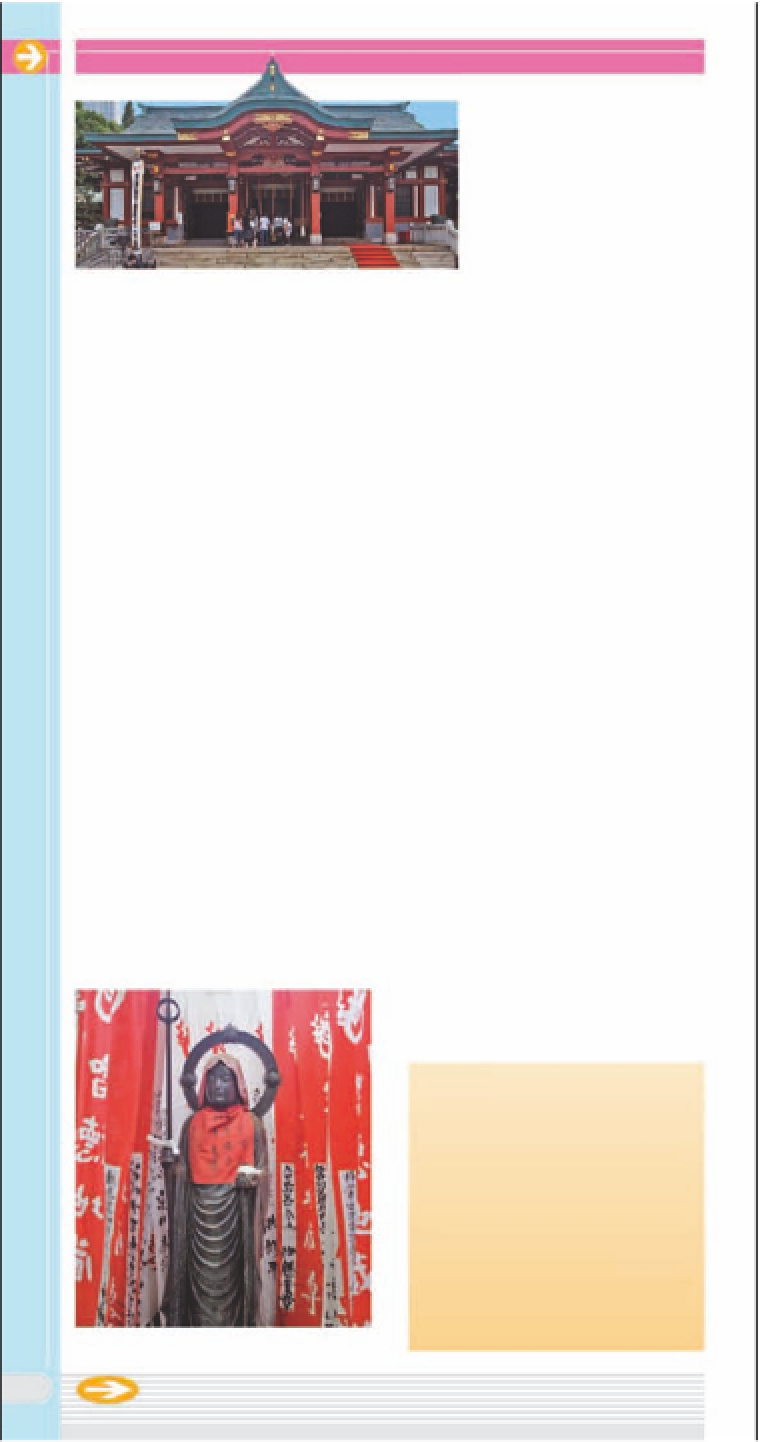Travel Reference
In-Depth Information
Goddess of Mercy).
Behind the main buildings
are forest-like paths lined
with
senbon nobori
stream-
ers hung by devotees in
the hope of fulfilling their
wishes. Small eateries
inside the shrine serve
tasty
oden
(fish cake stew) and
kitsune soba
(buckwheat noodles
and fried tofu).
d
Map D5 • 1-4-7
Moto-Azabu, Minato-ku • 3408-3414
Hie Shrine, one of Tokyo's revered temples
%
Hie Shrine
Burned down in the air raids
of 1945 and rebuilt in 1967, the
Hie Shrine was originally erected
as a protective shrine. Its role of
deflecting evil spirits from Edo
Castle still echoes in wood
carvings to the left of the main
shrine, depicting a monkey pro-
tectively cradling a baby.
Pregnant women still come here
to pray for safe deliveries. The
biannual Sanno Matsuri, one of
Tokyo's great festivals, puts the
shrine firmly on the city's cultural
map.
d
Map J4 • 2-10-5 Nagatacho,
Chiyoda-ku • 3581-2471
&
Musee Tomo
Established in 2003 by Tomo
Kikuchi, a collector of contem-
porary ceramics, this small
museum is one of the most ele-
gant in Tokyo. Exhibitions change
every few months, highlighting a
particular craftsperson or a
school of ceramic ware, such as
Bizen or Raku.
d
Map K5 • 4-1-35
Toranomon, Minato-ku • 5733-5311
• Open 11am-6pm Tue-Sun • Adm
*
San-mon Gate
^
Toyokawa Inari Shrine
Fires and earthquakes have
been reducing Tokyo's buildings
to rubble for over 400 years, but
the San-mon Gate, the main
entrance to Zojo-ji Temple, has
remained miraculously intact. The
oldest wooden structure in the
city, it was erected in 1605. The
three tiers of the red-lacquered
gate, an Important Cultural
Treasure, represent the three
stages required to enter Nirvana.
and Temple
A Zen temple with some Shinto
elements, the shrine has an
interesting approach, lined with
orange banners, lanterns, and
statues of foxes, the bodhisattva
Jizo (protector of children and
travelers), and Kannon, (the
Roppongi Street Art
Many world-class artists were
asked to create works on and
around Roppongi Hills. Louise
Bourgeois's huge spider sculpture,
Maman
, is the most visible, but
there are also wall drawings, a lit-
up robot, a giant coffee bean
installation, digital screen models,
a 3-D landscape painting, and
waveform furniture such as
interesting benches.
Toyokawa Inari Shrine and Temple
90


































